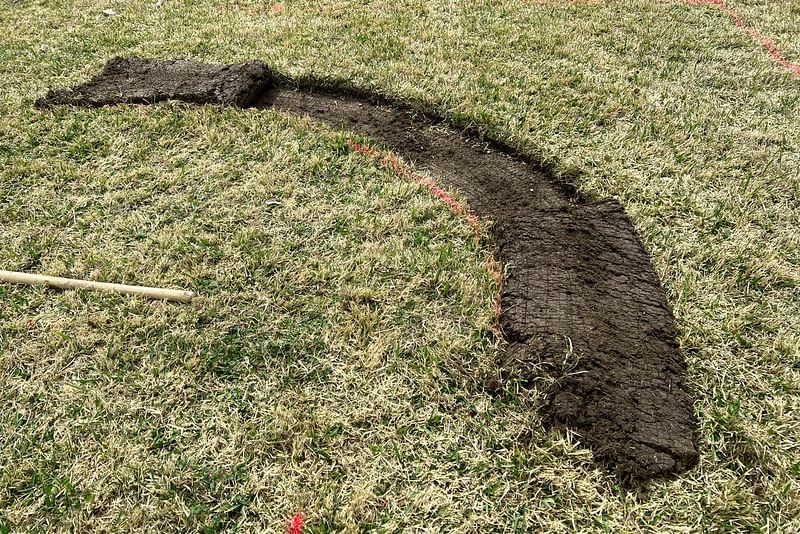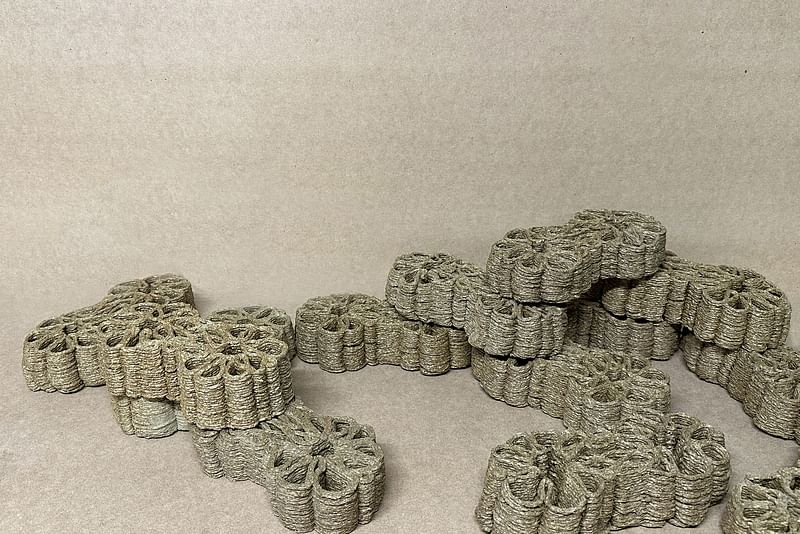'Big, Hot, and Sticky' features a timely look at Houston's response to the climate emergency
By Josh Niland|
Thursday, Jul 11, 2024

Related
As the Southeast Texas region swelters through the aftermath of Hurricane Beryl, a new exhibition of seven designers and academics at the Architecture Center Houston (ArCH), titled Big, Hot, and Sticky, is turning an eye to the future and the present dilemma through a closeup look at solutions, alternative proposals, and their desires to instill "communal acts of resurgence."
On view now until the end of summer, the show will consider Houston's "hyper-engineered" 640-square-mile footprint from Galveston Bay to west of Katy and the tensions that it faces as it continues to expand in the face of constant stress.

The research is curated by Dalia Munenzon and Maggie Tsang, two urbanists and faculty members at the University of Houston's Gerald D. Hines College of Architecture and Design and Rice University, respectively. They say the exhibition puts a spotlight on the city as an "urban ecosystem."

Topics to connect with on a holistic level include the obvious heat mitigation, flooding, noise pollution, and urban ecology. The result will challenge viewers to consider these three questions: How are environments, climates, and cultures co-constructed? What is the future of this notoriously air-conditioned, car-centered energy capital? What does it look like to thrive in a city that is Big, Hot, and Sticky?

"Big, Hot & Sticky showcases alternative ways of thinking about and designing for Houston's unique environment. So much of the city is designed and engineered to resist or to control the region's inherent climate and ecology," Munenzon and Tsang both said. "From exploring topics such as waste collection, drainage, and air conditioning, the designers of this exhibition critique the built environment's status quo and imagine new relationships between city and nature."

Contributors include a pair of 2022 Architectural League Prize for Young Architects + Designers winners, Dept. and Departamento del Distrito. A 2018 winner, Cadaster, is joined by Columbia GSAPP's Lola Ben-Alon and The Natural Materials Lab, who were honored in this year’s list over their sensitive abilities to "leverage material experimentation" — a trait evidenced by their 3D printed Fiber Ventilation Wall that was included along with other tangible items like a three-part installation on endemic Gumbo Soils.
Munenzon and the Urban Climate Adaptation Lab are joined by critics Jess Myers and Feifei Zhou to complete the list.
The exhibition is open to the public now and will remain on view until August 23rd.
RELATED EVENT Big, Hot & Sticky

RELATED NEWS Theaster Gates' 'The Gift and The Renege' highlights the Contemporary Arts Museum Houston's summer programming


Share
0 Comments
Comment as :